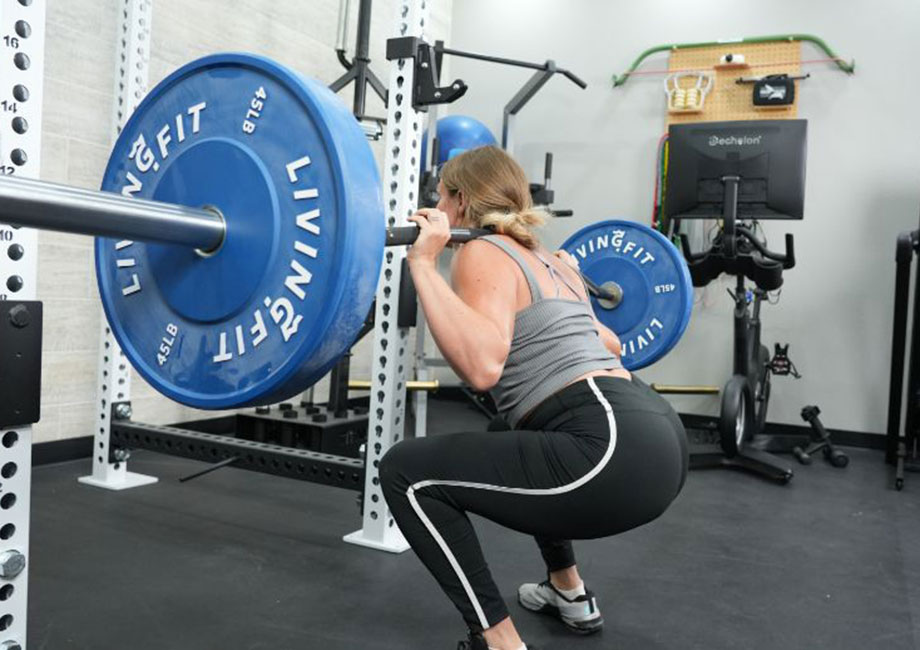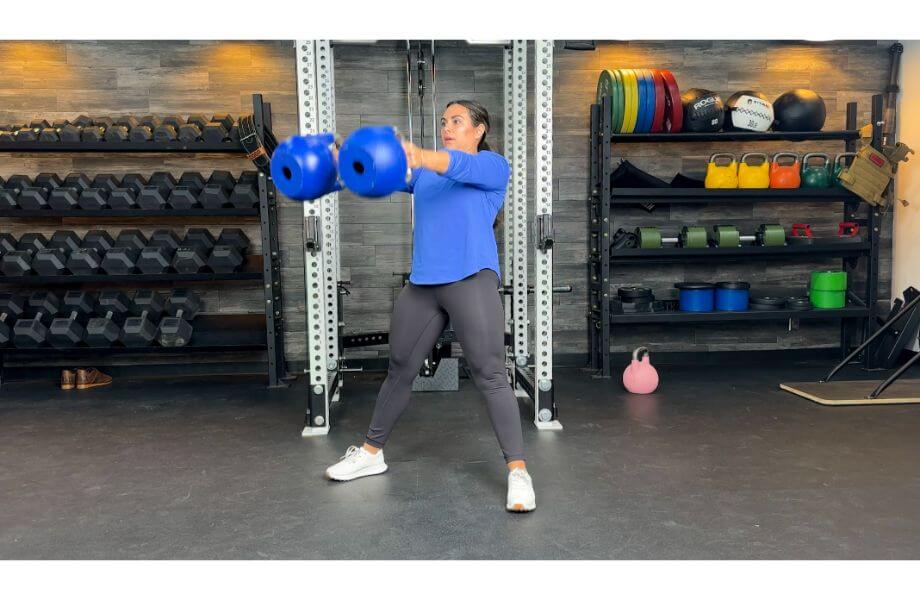Brush the dust off that old kinesiology or biomechanics textbook collecting dust on your bookshelf and get ready for a scientific lecture on isotonic exercises—just kidding, sort of. At first glance, “isotonic exercises” may sound confusing or something only those with exercise science degrees are qualified to understand. Don’t be worried; you’re more familiar with isotonic movements than you realize. Chances are, you are performing one at this very moment unless you’re sitting completely still.
Isotonic exercise is just a fancy way of saying that your muscles are shortening and lengthening through a range of motion working against a set resistance—which could be a set of the best dumbbells, best Olympic barbells, best kettlebells, or even a weight stack if using a cable machine. The word isotonic actually means “same tension,” and the idea is that through these movements, you keep the same amount of muscle tension throughout the full range of motion. If you’ve knocked out a set of squats, push-ups, lunges, or even crunches lately, you’ve also knocked out sets of isotonic exercises.
Grab your pen and training journal as I take you through a quick masterclass of isotonic exercises. I’ll use my experience as a certified strength and conditioning specialist (CSCS) and guide you through what isotonic exercises are, the best exercises to perform, and an excellent sample workout to help you decipher the difference between isotonic and isometric exercises.
What is Isotonic Exercise?
A 2015 Journal of Physical Therapy Science1 study describes isotonic exercise as “auxotonic contractions (occur when neither the force nor the length remains constant) in which, despite changes in muscle length, the tension in the muscles remains constant and improves muscle strength.”
In simpler terms, it is a type of muscle contraction in which the muscle changes length along with the joint angle while generating force to move a resistance—whether it be a dumbbell, barbell, kettlebell, or even resisting gravity! Isotonic exercises involve the two main muscle contractions: concentric contraction (when muscles shorten) and eccentric contraction (when muscles lengthen).
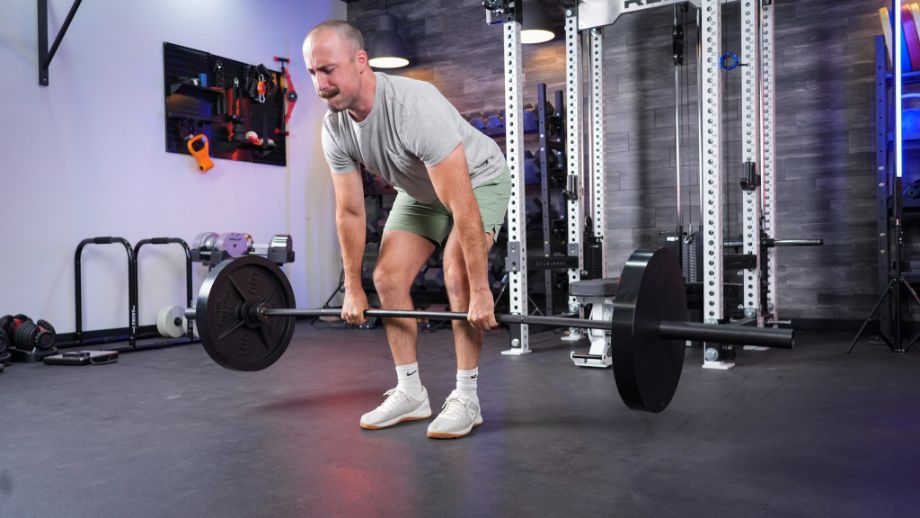
These exercises are excellent for developing muscle strength, as supported in an April 2022 study in Healthcare2, and prove effective when included in resistance training programs.
9 Best Isotonic Exercises
Allow me to dish out my nine favorite CSCS-certified isotonic exercises for you. You’re probably already familiar with these exercises, as you should be; they’re staples in any great workout program.
Coach’s tip: Don’t just stick to the exercises I’ve listed—explore their variations as well!
Back Squat
Muscles worked: Quads, glutes, hamstrings, calves, adductors, erector spinae, abs
Why do it: You can’t go wrong with getting a healthy dose of back squats during your training week. Incorporating the back squat into your routine delivers a comprehensive, full-body barbell experience, activating your quads, glutes, hamstrings, core, upper back, and more.
How to do it:
- Place a racked barbell at shoulder height then place your hands slightly wider than your shoulders with an overhand grip.
- Walk under the bar, squeeze your traps, and position it on your upper back.
- Take a few steps back from the squat rack with your feet hip-width apart.
- Brace your core, then squat down slowly by bending your knees.
- Reach your squat depth, then drive through your legs to stand back up.
- Repeat for the desired sets and reps.
RELATED: Full-Body Barbell Workout
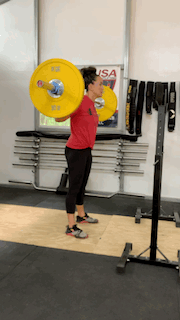
Bench Press
Muscles worked: Pec major, pec minor, triceps, delts, serratus anterior
Why do it: Don’t be shy when it comes to the bench press; a verified muscle and strength builder. Hit your traditional setup and give other variations, like close-grip, incline, or decline a try to bolster the chest and develop the triceps and delts.
Your options are limitless when it comes to equipment: barbells, dumbbells, and kettlebells give you plenty of variety to keep your workouts fun!
How to do it:
- Lie on a flat bench with a racked barbell over your chin and feet flat on the floor.
- Grab the barbell with an overhand grip, shoulder-width apart.
- Lift the barbell off the rack, placing it above your chest area.
- Breathe in, engage your core, and bend your elbows to lower the barbell toward your chest with control.
- Exhale and squeeze your chest muscle as you push the barbell straight back up to its starting position.
- Repeat for the desired sets and reps.
RELATED: Close-Grip Bench Press
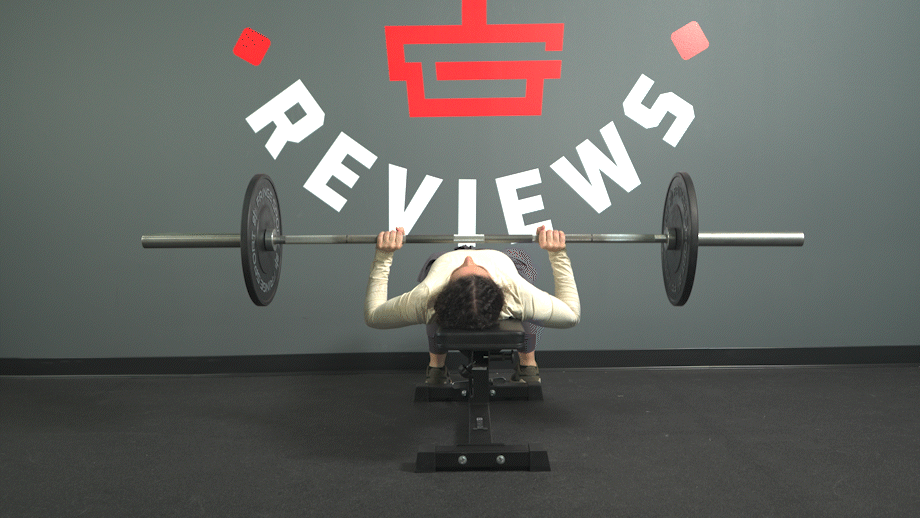
Deadlift
Muscles worked: Hamstrings, glutes, calves, quads, lats, traps, rhomboids, erector spinae, forearms, abs
Why do it: The deadlift stands as an indisputable force in the gym with its ability to sculpt muscle and build strength. This fundamental compound exercise targets fundamental muscle groups, including the hamstrings, glutes, lower back, and core, making it a powerhouse in functional fitness.
Incorporating the deadlift into your training regimen is non-negotiable—it’s the gateway to a bigger, faster, and stronger you!
How to do it:
- Begin with your feet shoulder-width apart and toes under the bar.
- Hinge at your hips and knees, and grip the bar just outside your legs.
- Engage your core, keep your chest up, and straighten your back.
- Lift by pushing through heels, straightening your legs, and driving your hips forward. Keep the bar close to your body without touching.
- Stand tall, pause, then lower the bar by bending at your hips and knees.
- Control the descent and repeat.
RELATED: How to Deadlift Heavier
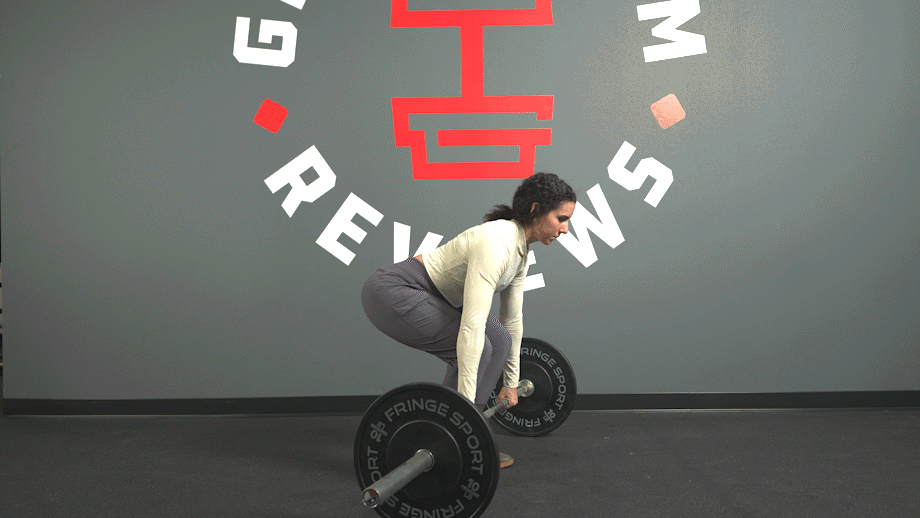
Pull-Up
Muscles worked: Lats, rhomboids, traps, biceps, delts, teres major, teres minor
Why do it: Pull-ups require a ton of bodyweight strength can help you develop that Arnold-esque V-taper of the back while targeting your biceps and boosting forearm strength.
How to do it:
- Grab the pull-up bar with an overhand grip, arms straight, shoulder-width apart.
- Pull up, squeezing your lats, upper back, and arms until your chest touches the bar.
- Lower down with control, keeping lats, upper back, and arms tight until your arms are straight.
- Repeat for the desired sets and reps.
Coach’s tip: Here’s a quick cue for the gym—rather than pulling up, visualize yourself pulling the bar down toward your chest. If you’re more advanced and want to elevate your pull-up strength, finish off your last set with three to five reps of eccentric pull-ups—lowering yourself for three to five seconds each rep.
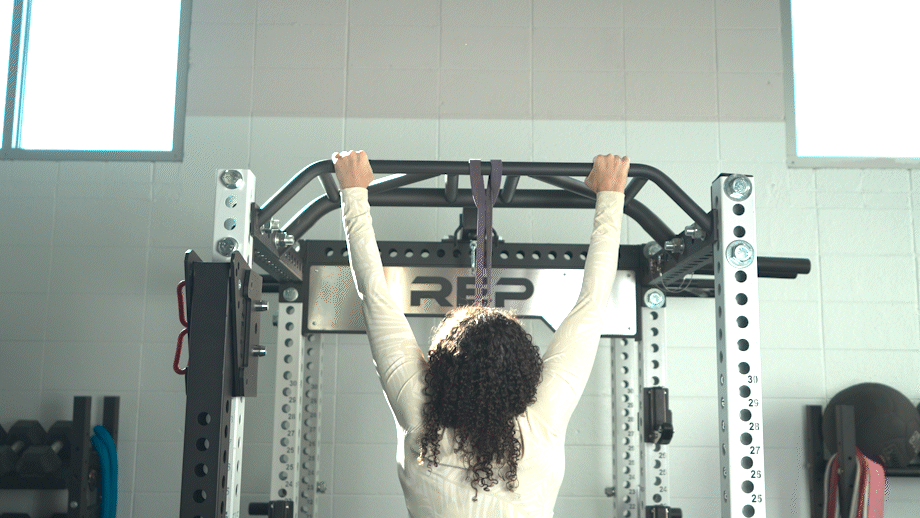
Push-Up
Muscles worked: Pec major, Pec minor, deltoids, triceps, serratus anterior, abs
Why do it: Push-ups are a staple in all of my workout programs, for sports performance or personal training, no matter the goal. They can contribute to your bench press PRs, and develop your chest and triceps.
How to do it:
- Get in a pushup position, arms straight, with your hands directly under your shoulders.
- Lower your body with control until the chest is close to the floor.
- Push back up, keeping your body flat and core tight.
- Repeat for desired sets and reps.
Coach’s tip: Truly test your push-up strength by placing a bumper plate on your back or wearing a weighted vest.
RELATED: Push-Up Variations
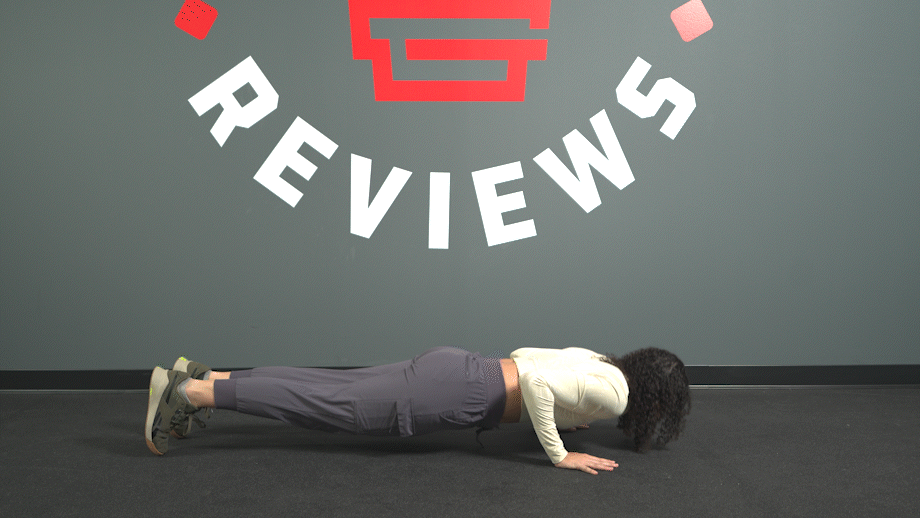
Biceps Curl
Muscles worked: Biceps brachii, brachialis, brachioradialis, forearms
Why do it: Adding a few sets of curls to your upper-body workout helps build the long and short head of your biceps and forearms. They’re also versatile: dumbbells, kettlebells, barbells, bands, cables—you name it, you can curl it.
How to do it:
- Stand with your feet hip-width apart.
- Hold a barbell, curl bar, or dumbbell with an underhand grip (palms facing up).
- Bend your elbows and curl the weight until it nearly touches your shoulder.
- Slowly lower the weight with control back down to the starting position.
- Repeat for the desired sets and reps.
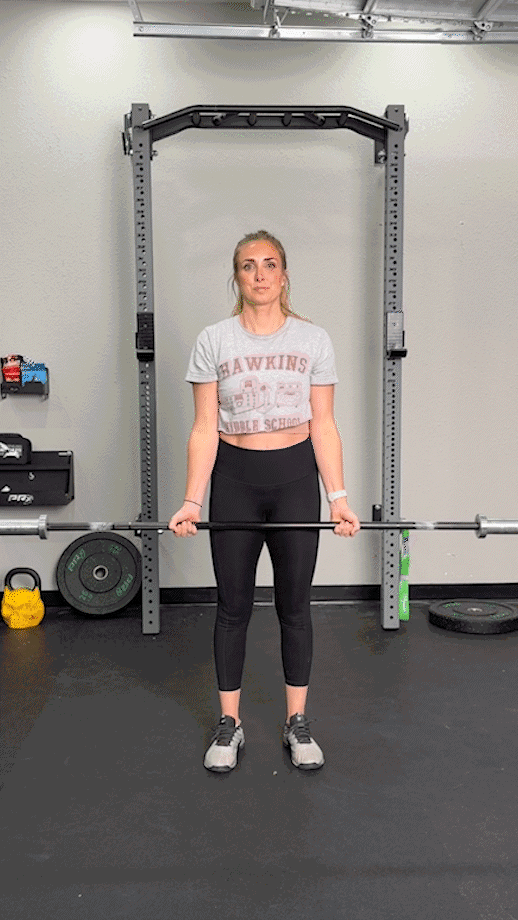
Lunge
Muscles worked: Quadriceps, glutes, hamstrings, adductors, calves, abs
Why do it: Lunges are e-s-s-e-n-t-i-a-l for developing lower body and single-leg strength. The lunges exercise is a unilateral movement that helps build balance, improve strength deficits between sides, and further develop your quads, glutes, hamstrings, and core.
How to do it:
- Stand tall with your feet hip-width apart and toes forward.
- Step forward with your left foot and lower your right knee until it’s nearly parallel with the floor.
- Push through your left foot and return to the starting position with your feet together.
- Switch sides and repeat for the desired sets and reps.
Coach’s tip: Like most isotonic exercises, don’t just settle for the traditional movement—work through front, reverse, pendulum, and other lunge variations for a more dynamic workout.
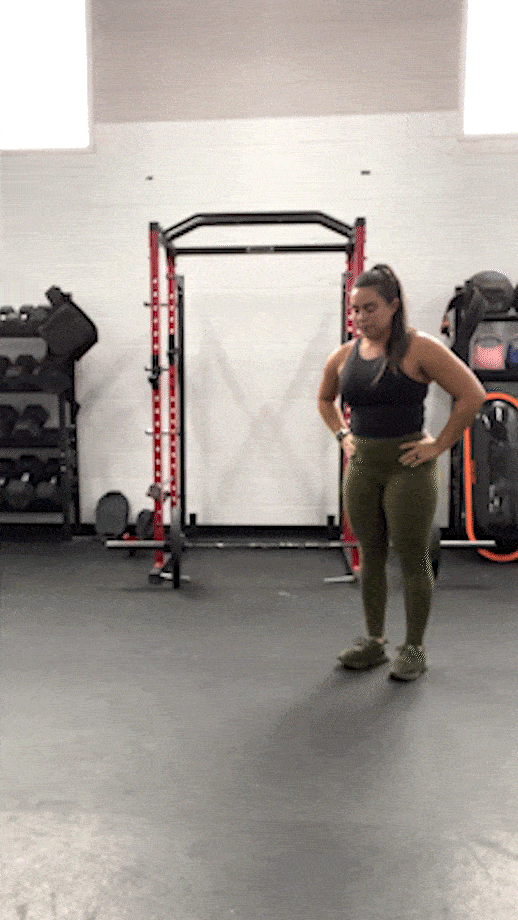
Triceps Extension
Muscles worked: Triceps
Why do it: Dumbbells, kettlebells, bands, and cables—anything you can get your hands on will work for the triceps extension, leading to a versatile movement to pump up all three heads of your triceps and grow that horseshoe-esque appearance.
How to do it:
- Stand with feet hip-width apart, gripping the head of a dumbbell with both hands (or a dumbbell in each hand).
- Lift the dumbbell over your head, and straighten your arms.
- Allow your elbows to bend, lowering the dumbbell behind your head with control.
- Squeeze your triceps, and lift the dumbbell back overhead.
- Repeat for desired sets and reps.
RELATED: Arm Workouts with Weights
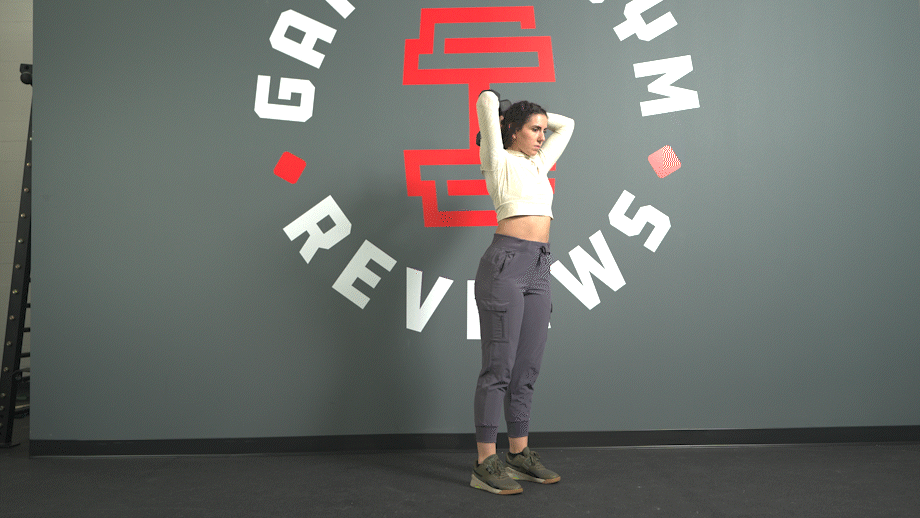
Crunches
Muscles worked: Rectus abdominis, transverse abdominis, obliques, hip flexors
Why do it: Who doesn’t want a strong and defined core? A solid set of abs does a lot of good for you, in and out of the gym. Crunches help develop a stable core to support your main strength lifts (squats, deadlifts, lunges, and bench presses).
How to do it:
- Lie on your back with your knees bent and feet flat on the ground.
- Place your hands gently behind your head without pulling on your neck.
- Squeeze your abdominal muscles and lift your chest toward your knees.
- Briefly hold, then lower yourself back down to the starting position with control.
- Repeat for desired sets and reps.
Coach’s tip: To really train the core, focus on squeezing your abs and controlling the eccentric (lowering) portion of the exercise.
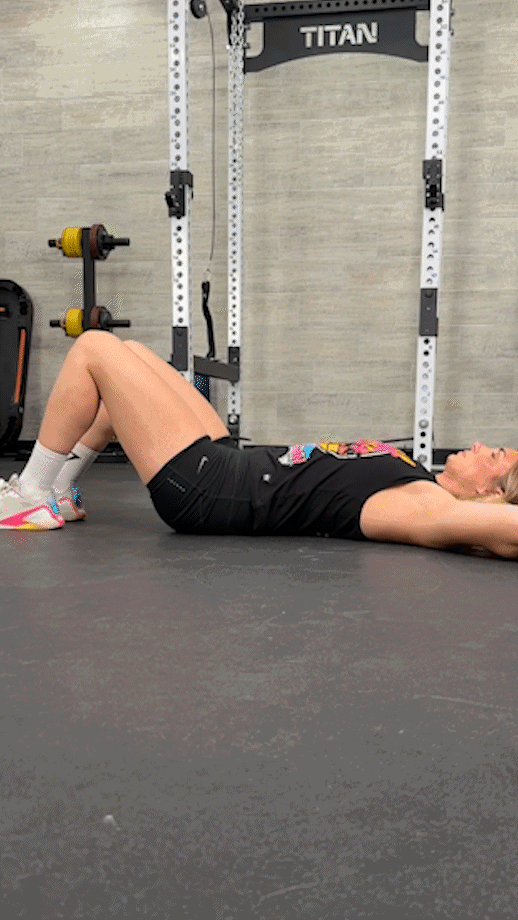
Benefits of Isotonic Exercise
Now that you understand them better, what are the benefits of isotonic exercise? Isotonic training can build muscle mass, drive strength, improve flexibility, increase muscle endurance, and build resiliency by helping you improve bone density, lower blood pressure, and develop your fitness level.
Muscle Strength
Have you knocked out any sets of back squats, bench presses, or even lunges lately? Guess what; you’ve experienced the benefit of improving strength and size via isotonic exercise!
The muscle strength and size-boosting effects of resistance training3 are well-known among fit folks, highlighting a clear connection between integrating isotonic exercises into your training regimen and strength building.
In other words, utilizing loaded movements like the bench press, back squats, pull-ups, and other classic weight room exercises enables you to engage in isotonic exercises, thus maximizing your workouts to reach your strength training goals.
Flexibility and Coordination
Isotonic exercises engage muscles in movements that span their full range of motion, improving flexibility4 by stretching and lengthening your muscles. These exercises require coordinated muscle action, encouraging various muscle groups to work together. Whether you practice isotonic training with free weights or low-impact exercises, consistent practice with isotonic exercises can help improve balance, coordination, and flexibility.
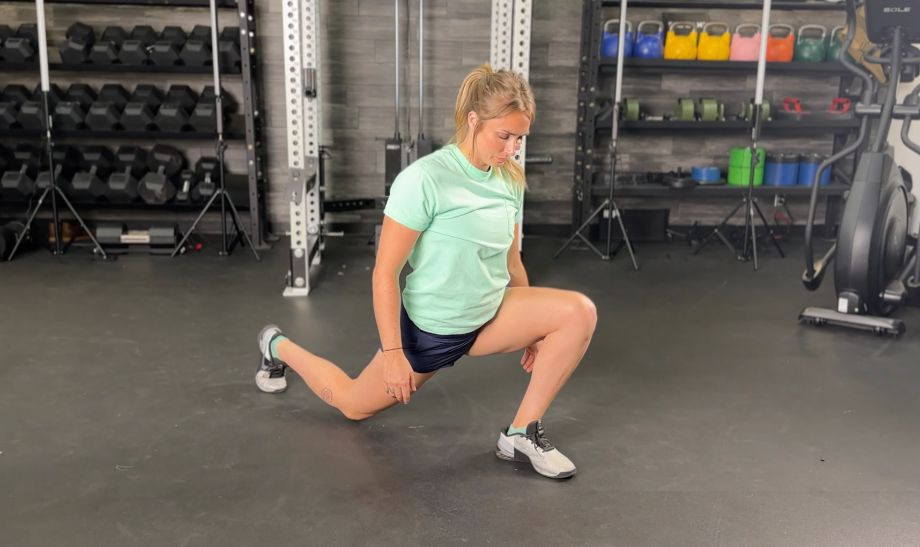
RELATED: Balance Exercises
Muscle Endurance
Isotonic exercises provide dynamic workouts filled with repeated muscle contractions, enhancing your muscle’s ability to perform work over time. Engaging in regular workouts with a focus on endurance will help develop the following qualities when it comes to endurance benefits5: mitochondrial density, increased intramuscular capillaries, improved oxygen efficiency (how well the muscles utilize oxygen), and lactate thresholds.
Ultimately—you’ll want to perform exercises with higher volume (20+ repetitions) or over longer periods (think circuits, intervals, or AMRAP) to improve muscular endurance.
Resiliency
Outside of developing newfound strength, you get all the other benefits of resistance training when you regularly perform isotonic exercises. Here are a few of the vital benefits that help you build a more resilient body:
- Improved bone density 6
- Enhanced cardiovascular endurance
- Improved metabolism7
- Promotion of mental health8
While these benefits may not be as gym-savvy as strength and muscle definition, they’ll do a lot in developing better health and longevity.
Isotonic Vs Isometric Exercise
Understanding the differences between isotonic and isometric exercises is crucial in crafting an effective training program, ensuring the exercises you select target the goals you wish to achieve. Each has its place in building an effective workout.
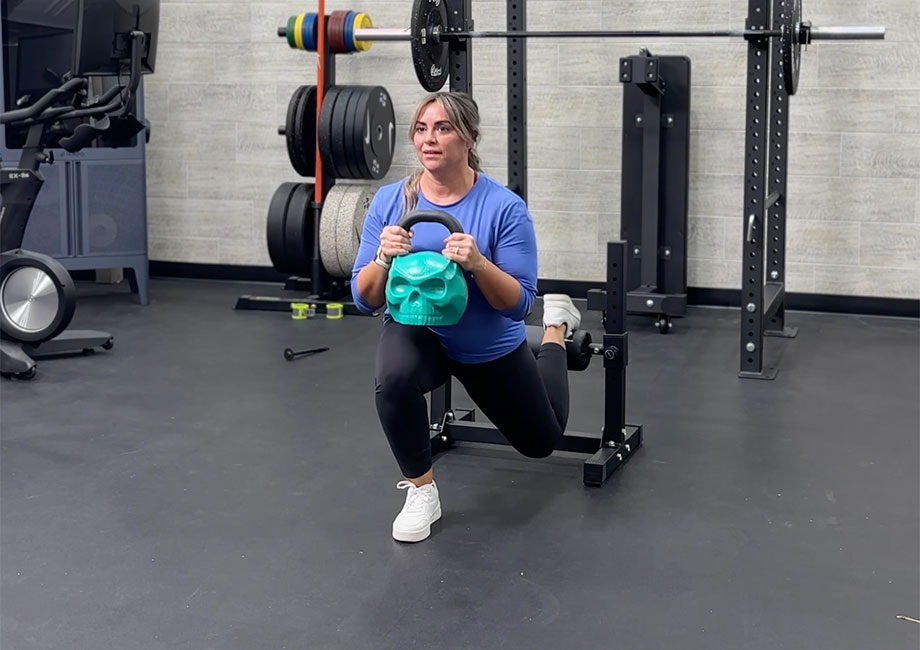
I’ve outlined isotonic and isometric exercises so you may easily decipher between the two. Check out the definitions and types of muscle contractions they involve and the key benefits of each.
| Type of exercise | Isotonic Training | Isometric Training |
| Definition | Focus on dynamic muscle actions leading to changes in joint angle and muscle length. | Focus on static (isometric) muscle actions without change in joint angle or muscle length. |
| Contraction type(s) | Concentric (shortening) Eccentric (lengthening) | Isometric (static, not changing) |
| Benefits | Muscle strength Muscle endurance Flexibility Functional fitness | Muscle endurance Joint stability Static strength Force production |
| Examples | Squat Deadlift Push-up Pull-up | Plank Wall sit Glute bridge hold Split squat hold |
Sample Isotonic Workout
I’ve covered what isotonic exercises are, the nine best isotonic exercises, and the benefits—now let’s put it all into practice. Check out the sample isotonic workout provided below, carefully constructed by yours truly, a CSCS-certified performance coach.
Strength
The strength exercises will focus on compound lifts to bolster muscle strength while incorporating supersets to make the workout more time-efficient. Remember to work through a full range of motion and select weights that allow proper technique.
| Exercise | Sets | Reps | Notes |
| A1. Back Squat | 3 | 5-8 | |
| A2. Push-up | 3 | 12-15 | Add weight if desired |
| B1. Barbell Romanian Deadlift | 3 | 7-9 | |
| B2. Bent-Over Dumbbell Row | 3 | 12-15 |
Note(s): Letters (i.e. A1., A2.) indicate a superset. Perform one set of barbell back squats, immediately followed by one set of pull-ups. That equals one full set. Repeat for three total sets.
RELATED: Superset Workouts
Accessory Exercises
You’ll use the following accessory exercises to improve muscle hypertrophy (size) and endurance. Take advantage of the lower-body unilateral exercises while busting out high-volume upper-body sets of isolated exercises.

| Exercise | Sets | Reps | Notes |
| C1. Dumbbell Hammer Curl | 4 | 15-20 | Use light-to-moderate weight |
| C2. Dumbbell Triceps Extension | 4 | 15-20 | Use light-to-moderate weight |
| C3. Weighted Walking Lunge | 4 | 15, per side | Use light-to-moderate weight |
Note(s): Letters (i.e. A1., A2.) indicate a superset. Perform one set of barbell back squats, immediately followed by one set of pull-ups. That equals one full set. Repeat for three total sets.
Isotonic Exercise: Final Thoughts
The term isotonic exercise can sound very science-y at first glance, but it’s something you experience daily, whether in or out of the gym.
- Isotonic exercises are excellent for building strength, improving flexibility and muscle coordination, and muscle endurance.
- Isotonic contractions involve changes in muscle length and joint angle, whereas isometric contractions experience no changes in muscle length or joint angle.
- Incorporate isotonic exercises (you most likely already do) into your fitness regimen to crush your fitness goals.
I’ll leave you with one last message, perform isotonic exercises, they’re great for your muscles and your health—period.
Isotonic Exercise: FAQs
What is the difference between isotonic and isometric exercise?
Isotonic exercises are classified by movements that cause the muscle length to change during contraction while a joint moves, whether shortening or lengthening muscle fibers. The movements you perform in daily life, such as walking and running, and the traditional movements you perform in the gym, such as squats, push-ups, bench presses, deadlifts, and curls, represent isotonic exercises.
Isometric exercises are characterized by muscle contractions where the length of the muscle remains constant, and there is no observable joint movement—think of squeezing a muscle as hard as you can without moving; that’s an isometric contraction. These exercises involve static positions that require maximal effort without the typical range of motion associated with dynamic exercises.
Examples of isometric exercises include planks, wall sits, and even modifying dynamic movements like a biceps curl by pausing halfway and holding the contraction for a specified duration.
What are the two types of isotonic exercise?
Isotonic exercises involve two primary types of muscle actions: concentric and eccentric contractions. For example, check out a crowd favorite—the barbell curl.
Initiating the curl motion involves a concentric muscle action characterized by the shortening of the muscle. As you reach the top of the repetition and begin lowering the barbell, the muscle action transitions into an eccentric muscle contraction, where the muscle lengthens under control.
Both movements are essential for improving strength through the full range of motion and increasing muscle size.
What are 3 examples of isotonic exercises?
Isotonic exercises are characterized by movements that involve eccentric (muscle lengthening) and concentric (muscle shortening). Most exercises you perform are actually isotonic exercises.
Here are my three isotonic favorite exercises:
– Push-up
– Back squat
– Pull-up
All three exercises, along with other isotonic movements like deadlifts, bench presses, lunges, etc., are characterized by dynamic movements that create changes in muscle length and joint activity while consistently maintaining tension.
Think of a continuous contraction or squeezing of the targeted muscle throughout its entire range of motion. This dynamic nature makes isotonic exercises effective for engaging multiple muscle groups and promoting strength and endurance.
References
- Kim MK, Choi JH, Gim MA, Kim YH, Yoo KT. Effects of different types of exercise on muscle activity and balance control. J Phys Ther Sci. 2015;27(6):1875-1881. doi:10.1589/jpts.27.1875
- Widodo AF, Tien CW, Chen CW, Lai SC. Isotonic and Isometric Exercise Interventions Improve the Hamstring Muscles’ Strength and Flexibility: A Narrative Review. Healthcare (Basel). 2022;10(5):811. Published 2022 Apr 27. doi:10.3390/healthcare10050811
- Schoenfeld BJ, Contreras B, Krieger J, et al. Resistance Training Volume Enhances Muscle Hypertrophy but Not Strength in Trained Men. Med Sci Sports Exerc. 2019;51(1):94-103. doi:10.1249/MSS.0000000000001764
- Azeem K, Zemková E. Effects of Isometric and Isotonic Training on Health-Related Fitness Components in Young Adults. Applied Sciences. 2022; 12(17):8682. https://doi.org/10.3390/app12178682
- Wang B, Davies TB, Way KL, Tran DL, Davis GM, Fiatarone Singh M, Hackett DA. Effect of resistance training on local muscle endurance in middle-aged and older adults: A systematic review with meta-analysis and meta-regression. Arch Gerontol Geriatr. 2023;109:104954. doi: 10.1016/j.archger.2023.104954. PMID: 35200532.
- Zhenyu W, Xingchun Z, Yongjie L, Yue L, Yuan X, Xinyong P. Comparative efficacy of different resistance training protocols on bone mineral density in postmenopausal women: A systematic review and network meta-analysis. Front Physiol. 2023;14:1105303. doi: 10.3389/fphys.2023.1105303. PMID: N/A. Available from: https://www.frontiersin.org/articles/10.3389/fphys.2023.1105303. ISSN: 1664-042X.
- Westcott WL, PhD. Resistance Training is Medicine: Effects of Strength Training on Health. Curr Sports Med Rep. 2012 Jul/Aug;11(4):209-216. doi: 10.1249/JSR.0b013e31825dabb8.
- Gordon BR, McDowell CP, Hallgren M, Meyer JD, Lyons M, Herring MP. Association of Efficacy of Resistance Exercise Training With Depressive Symptoms: Meta-analysis and Meta-regression Analysis of Randomized Clinical Trials. JAMA Psychiatry. 2018;75(6):566-576. doi:10.1001/jamapsychiatry.2018.0572


